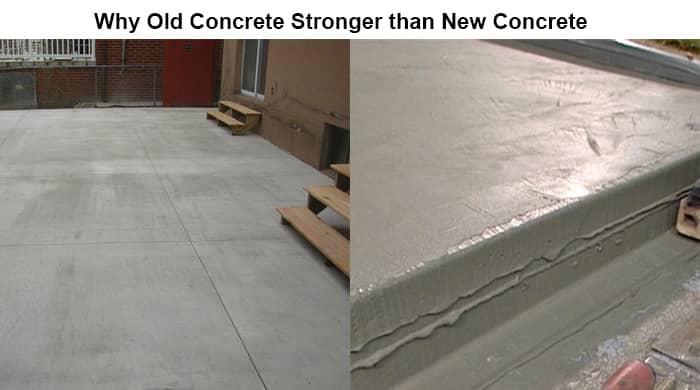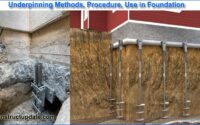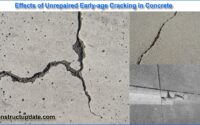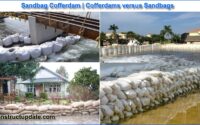Why Old Concrete Stronger than New Concrete | Old Concrete vs. New Concrete
New concrete is not as robust as older concrete. The materials that were employed to make it are to blame for this. Although we are unsure of the precise recipe, we do know that it included volcanic ash, lime, and seawater. Many rare Earth minerals that are not present in contemporary concrete were present in these elements. This outdated mixture produced a crystalline structure that strengthened and became more resilient with time. It finally grew to be impervious to seawater and as hard as a natural rock. Portland cement, sand, and stone are combined with fresh water to create modern concrete. When new, this results in concrete that is incredibly strong and resilient, but it doesn’t survive nearly as long.
In this essay, we’ll examine the distinctions between old and new concrete, as well as its advantages and disadvantages, and why Roam concrete was so robust and long-lasting.

Old Concrete is Stronger Than New Concrete, Why?
Due to its construction, older concrete is significantly stronger and more resilient than newer concrete. Roman concrete, according to some scientists, could be mixed and hardened underwater. Today’s concrete is very definitely incapable of doing that.
So what makes old concrete so strong and resilient?
Because it was created from volcanic ash, old concrete is more durable than new concrete. Rare minerals like Al-tobermorite and Phillipsite were present in the ash.
Continuous curing of the concrete by these minerals results in a chemical structure that over time becomes denser and stronger. As a result, the concrete becomes significantly stronger, more resilient, and actually improves with time.
When old concrete dries out sufficiently, it becomes thick and rock-like in consistency. Not with fresh concrete. This is one of the causes of how easily modern concrete cracks. Because it doesn’t have the same components as older concrete, the chemical linkages aren’t nearly as strong.
Old concrete was created using a lime and volcanic rock mixture. The mixture was powdered and then combined with seawater. This set off a scorching chemical reaction that created connections that were as solid as stones.
During the curing phase, rare minerals from volcanic ash formed solid connections. These minerals crystallize into rocks that resemble volcanic rock in both strength and shape. As a result, the concrete hardens into a sturdy construction that can survive extreme damage.
Roman concrete grew stronger when combined with seawater because it had even more minerals, in contrast to modern concrete that is harmed by salt. Even after more than a thousand years of being completely covered in water, many Roman seawalls are still intact today. As the seawater tightens the links in the concrete, they keep getting stronger.
Old Concrete Vs New Concrete
Sand, stone aggregate, and Portland cement are commonly combined with fresh water to create modern concrete. The active component that chemically combines with water to create a paste is cement. The sand and stone are joined together by the paste as it hardens over time. Concrete becomes stickier and more gritty due to the addition of sand. Concrete’s tremendous strength comes from stone.
Portland cement is a manufactured substance. Clinker is a compound made of silica sand, limestone, clay, chalk, and other elements that have been fused together at extremely high temperatures. Cement powder is created by grinding down the clinker. Sand and rock aggregates are joined by cement in concrete.
Aggregates must be inert for making concrete. Any unwanted chemical reaction may cause cracks to show up when the concrete dries. These fissures eventually result in erosion and deterioration. This is a major factor in why modern concrete doesn’t endure as long as natural rocks or Roman concrete.
Old Roman concrete works in a different way.
An old mortar was made by mixing lime, seawater, and volcanic ash. The mixture resembles the chemical process that tuff rocks, naturally cemented deposits of volcanic ash, may have undergone in the time of the Romans. Volcanic rock naturally contains a lot of rare Earth minerals that aren’t utilised in contemporary concrete.
The volcanic ash mortar was subsequently filled with seawater and volcanic rock aggregate. Roman concrete was extremely strong and dense thanks to the reaction of the mortar with the seawater and aggregate.
Take a look at the photo up there. It displays modern concrete steps next to steps made of Roman concrete that date back thousands of years. The distinction is obvious. Roman concrete is far more robust and long-lasting.
Why Don’t We Use Old Concrete Anymore?
Modern concrete is an excellent material for construction. Concrete is used to construct nearly all of our foundations, sidewalks, buildings, bridges, and dams. It is one of the most widely used building materials and is utilized everywhere. However, it is undeniable that the concrete used in ancient Rome was more stronger. So why do we no longer use it?
Because we don’t know how old concrete was constructed, we no longer utilize it. Researchers have been testing outmoded concrete for years, and while they have made remarkable strides, they still lack the formula.
Cost is another consideration. Due to its low cost and extensive availability, concrete is a material that is utilized frequently. The essential components needed to manufacture it are present in almost every nation on Earth. However, it is highly expensive to create in a lab the rare minerals present in historical concrete, such as Al-torbernite, which gives Roman concrete its strength.
Scientists are unaware of the procedure in addition to the precise chemicals required to manufacture Roman concrete. For instance, when Al-torbernite is added to a cement mixture, the resulting concrete cracks as it dries. They are aware that Al-torbernite is present in Roman concrete, which is a major problem. They are unsure of how to add it without causing the concrete to break.
Researchers from all across the world are looking for a technique to recycle old concrete. But despite their efforts, scientists are still unable to duplicate it.
As a result, using old concrete is almost always unaffordable. The ancient concrete that we may still create today is also not useful for construction projects or buildings. But efforts to revive this antiquated building material, which was essential to some of Rome’s most amazing engineering marvels, continue.
What’s In Old Concrete?
Scientists map samples using an electron microscope and methods like microdiffraction and Raman spectroscopy to determine the composition of Roman concrete. They are able to identify every mineral found inside old concrete using these cutting-edge procedures.
One of the minerals discovered was aluminous tobermorite, which is a silica-based mineral. It is uncommon and challenging to produce in a lab, although it is common in old concrete. The seawater used to make the concrete causes aluminous tobermorite and a related mineral called phillipsite to develop in it. The volcanic ash is gradually dissolved by the water, which also provides it time to form a strengthened structure from crystals that lock together.





